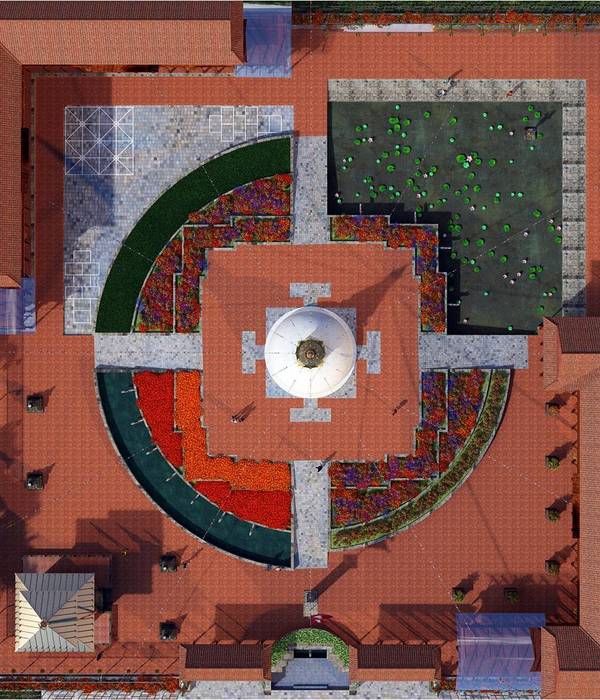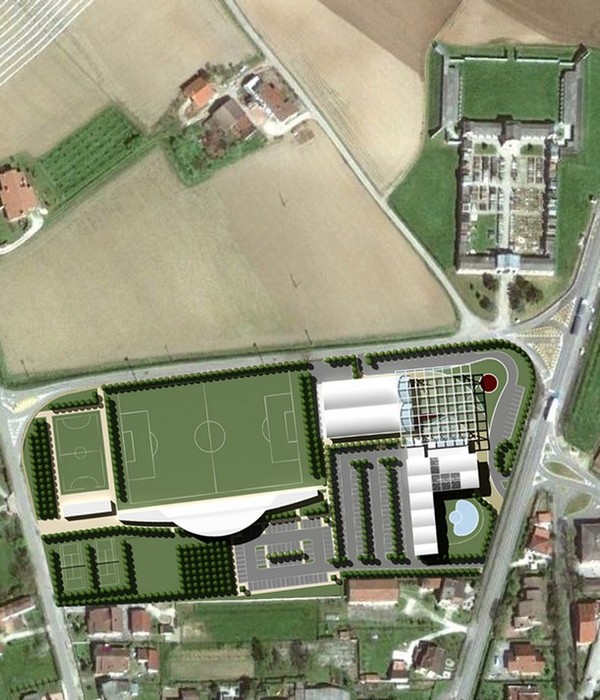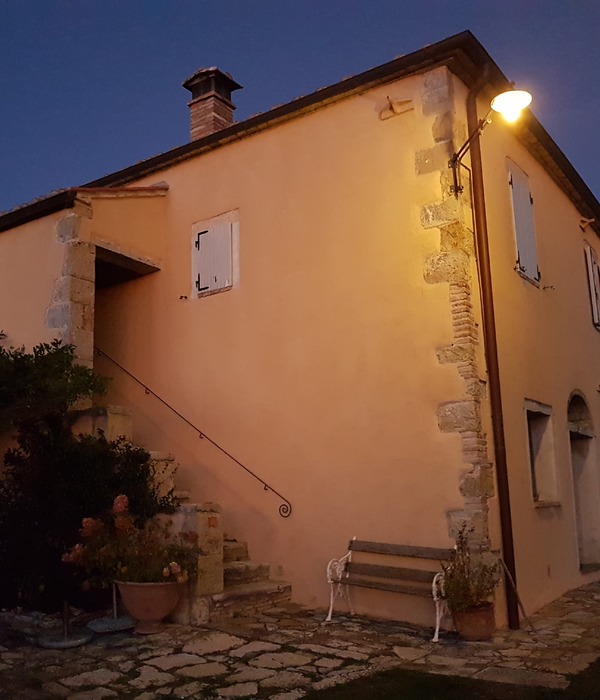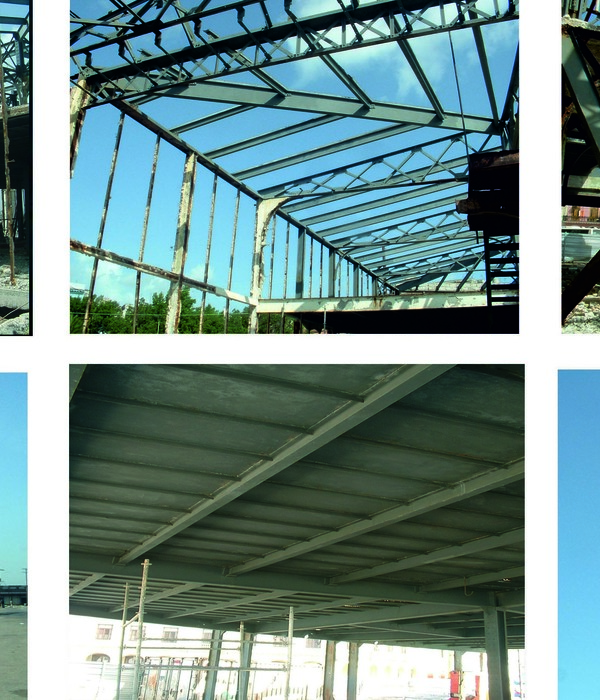身份与文化
Identity and Culture
于2020年10约开放的Kulturbahnhof文化中心是德国巴登-符腾堡州阿伦市的标志性项目。在设计过程中,a+r Architekten凭借着充分的敏感度,使该地的工业历史得以在当下重现。
The Kulturbahnhof, which was opened in October 2020, is a beacon project for Aalen, a town in the state of Baden-Württemberg, Germany. With great sensitivity, a+r Architekten have revived the location’s industrial history in the present.
▼项目概览,general view © Brigida González
阿伦市政府希望在如今被称为“Stadtoval”的场地上建造一座“文化与创意的灯塔”。场地原先被铁轨占据,后来又被一家工程钢材公司使用。考虑到项目位于内城区的重要位置,落成后的文化中心将发挥举足轻重的作用:它不仅要容纳城市的各种文化机构和餐饮设施,还将对整个地区产生强大的辐射效应。
The town of Aalen wanted a “beacon for culture and creativity” on the site now known as the Stadtoval, which was previously occupied by railroad tracks and later used by a construction steel company. Within the framework of this significant inner-city expansion, the Kulturbahnhof plays a central role: the building is not only intended to house the city’s diverse cultural institutions and catering facilities, but also to have a major radiant effect throughout the region.
▼Kulturbahnhof文化中心坐落在如今被称为“Stadtoval”的场地上 View of the new Kulturbahnhof Aalen on the site known as the Stadtoval© Brigida González
继2015年在严苛的设计竞赛中获得第一名之后,a+r Architekten在2018年至2020年间实施了该项目,并于2020年10月初正式宣布了建筑的落成和开放。新建筑如今容纳了电影院、剧院、音乐学校和高质量的文化活动空间以及配套的餐饮设施。
After coming first in the restricted competition in 2015, a+r Architekten implemented the project between 2018 and 2020. The inauguration of the building in the northwest of Aalen’s Stadtoval, which now accommodates a cinema, a theatre, the music school and high-quality function rooms for cultural events along with premises for catering, was celebrated from October 2-4, 2020.
入口立面,entrance facade© Brigida González
严谨地介入城市遗产
Cautious approach to the urban heritage
对于建筑团队而言,本次项目带来的挑战是“从既有的建筑片段和新的元素中创造出一个和谐的整体。”自2014年的大火之后,场地中只遗留下一些破碎的建筑片段,包括前铁路行政大楼和维修车间的大厅。既有的工业建筑构成了阿伦市铁路历史中的重要“文献”——它们具有当地建筑的典型特征以及一些引人注目的特点,例如砂岩材质的立面以及短边的三角墙。a+r Architekten项目负责人和首席建筑师Hellmut Schiefer表示:“我们的中心思想是以谨慎的方式去保护这些遗迹,同时进一步将其发展为21世纪具有前瞻性的文化中心。”
▼自2014年的大火之后,场地中只遗留下一些破碎的建筑片段© Brigida González After a fire in 2014, only fragments of several historical groups of buildings existed on the site
▼新建筑立面,the new facade© Brigida González
▼广场视角,view from the plaza© Brigida González
历史建筑和当代工业建筑
Historical construction and contemporary industrial architecture
遭到大面积破坏的外墙以一种风格化的方式被更替为彩色的清水混凝土立面。建筑师们试图在一切可能的情况下恢复建筑的历史特征。例如,砂岩外墙由石匠在原位进行修复。由于新的砂岩表面更加光滑,新植入的部分被有意地保持了裸露状态。短侧山墙的屋顶也根据历史设计进行了重建。相比之下,长侧屋檐采用了完全不同的处理方式:原有立面被替换为用折叠穿孔板覆盖的长方形体块,与相邻的南侧街区立面形成了空间上的呼应。
项目负责人对此描述道:“相比于装饰华丽且体观感厚重的旧砂岩外墙,叠加的长方形元素显得更加朴素和克制。半透明的穿孔板立面让建筑的长方形体块得以从中浮现,使人联想到布纹窗帘和当代的工业建筑。”
The extensively destroyed façade was replaced in a stylised way with coloured fair-faced concrete. Where possible, the architects sought to revive the historical character. For example, the sandstone façade was completed and repaired by stonemasons in the corresponding places. Due to the smoother surfaces of the new sandstone, the new components were deliberately left visible as such. The roofs of the short side gables were also rebuilt according to the historical design. The longitudinal gable, by contrast, was treated quite differently: a+r Architekten replaced it by an elongated, cuboid-shaped volume clad in folded perforated plate, thus creating a spatial reference to the urban edges of the neighbourhood bordering to the south.
“In contrast to the historical sandstone façade with its ornamental craftsmanship and massive appearance, the superimposed cuboid is plain and restrained. The semi-transparent perforated sheet façade allows the cuboid’s volume to shine through, creating associations with a cloth-like curtain and contemporary industrial architecture,” the project manager describes the design concept.
▼外墙以一种风格化的方式被更替为彩色的清水混凝土立面© Brigida González The extensively destroyed façade was replaced in a stylised way with coloured fair-faced concrete
▼半透明的穿孔板立面让建筑的长方形体块得以从中浮现© Brigida González The semi-transparent perforated sheet façade allows the cuboid’s volume to shine through
“屋中屋”为内部空间赋予巨大的灵活性
The “house-in-house” principle allows for great flexibility of the interiors
历史悠久的外墙界定出了一个宽敞的空间,数个新的盒子空间被放置在这个完全清空的空间内,作为不同的功能区域。这些盒子在另一方面也支持并加强了新的承重结构。面积较大的门厅和公共空间位于旧建筑内,音乐学校和剧场工作室被设置在新的立方体中,这些用于文化创作和教育的“服务型”空间象征性地围合在表演舞台的上方。
▼建筑内部,数个新的盒子空间被放置在完全清空的空间内© Brigida González New boxes were placed inside this completely gutted space, zoning it for different uses
▼宽敞的门厅,View into the spacious foyer© Brigida González
面积较大的门厅和公共空间位于旧建筑内,The large event halls and public uses are located in the old building© Brigida González
走廊和楼梯,Corridor and staircase© Brigida González
▼楼梯间,Stair well© Brigida González
▼走廊座位区,Seating area in the corridor© Brigida González
▼剧场内部,View into the theatre© Brigida González
▼电影院内部,The cinema© Brigida González
通过使用旧建筑的构成元素,如材料、窗户和裸露的屋顶结构,不同的文化场地得以展现出其本真的状态,同时又能够相互独立地运作。Hellmut Schiefer解释说:“整体的材料和设计理念都是以关联与融合19和21世纪的工业建筑为基础。”
An important aspect for the architects was to use historical components such as materials, windows and a visible roof construction to create an authentic and independent ambience for the different cultural venues. “The entire material and design concept is based on the idea of interrelating the industrial architectures of the nineteenth and twenty-first centuries in a variety of ways,” explains Hellmut Schiefer.
▼裸露的屋顶结构,Thevisible roof construction© Brigida González
▼窗户和墙面细节,Windows and wall details© Brigida González
▼外立面细节,facade details© Brigida González
资源优化和协同增效
Resource optimisation and synergy effects
项目同时还展现了高度的实用性:从阿伦市的角度来看,原先分散在不同地点的文化场馆如今被集中在同一座建筑中,这将有助于优化城市资源、增强协同效应,同时保证长期的成本节约。
▼建筑外观,Exterior view© Brigida González
▼场地平面图,Site plan© a+r Architekten
▼首层平面图,Ground floor plan© a+r Architekten
© a+r Architekten
{{item.text_origin}}












